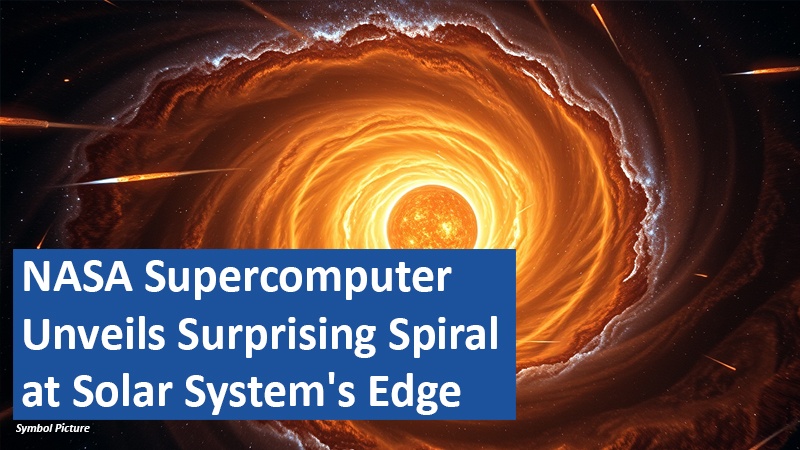
In a groundbreaking discovery, NASA’s Pleiades supercomputer has revealed an unexpected spiral structure within the inner Oort cloud, challenging long-held beliefs about our solar system’s outer reaches. This finding, announced on February 16, 2025, suggests that billions of comets form a spiral disk reminiscent of the Milky Way galaxy, extending up to 15,000 astronomical units (AU) from the Sun.
######################################################
Now exclusively try Amazon Prime and Prime Video free for 30 days!
##########################################################
A Hidden Cosmic Twist
The Oort cloud, traditionally thought to be a spherical shell of icy bodies surrounding our solar system, has never been directly observed due to its vast distance and the faintness of its objects. However, advanced simulations using NASA’s supercomputer have uncovered a surprising spiral formation within its inner regions, between 1,000 and 10,000 AU from the Sun This discovery challenges previous assumptions about the cloud’s uniformity and suggests complex dynamics at play in the outer solar system.
Galactic Forces at Work
Scientists believe that this spiral structure may be shaped by forces beyond our solar system, particularly the gravitational influence of the Milky Way galaxy. The simulation, which tracked the orbits of billions of “test particles” representing comets over 4.5 billion years, reveals that galactic tides and stellar encounters may play a significant role in sculpting the Oort cloud’s structure. This finding opens up new avenues for understanding the interplay between our solar system and the broader galaxy.
Implications for Solar System Evolution
The discovery of a spiral formation in the Oort cloud has profound implications for our understanding of the solar system’s evolution. It provides new insights into the conditions and processes that shaped our cosmic neighborhood during its infancy. Furthermore, this structure may offer clues about the Oort cloud’s role as a source of long-period comets, which have been crucial in understanding the early material content of our solar system.
Observational Challenges and Future Prospects
While the simulation results are compelling, direct observation of this spiral structure remains a significant challenge due to the extreme distances involved and the faintness of the comets. However, future astronomical projects, such as the Vera Rubin Observatory’s Large Synoptic Survey Telescope (LSST), may enhance our ability to detect larger and more distant comets, potentially providing direct evidence of this spiral structure.
This unexpected discovery of a spiral formation within the Oort cloud marks a significant milestone in our understanding of the solar system’s outer regions.
As we continue to explore these distant realms, what other surprises might we uncover about the structure and dynamics of our cosmic neighborhood? How might this new understanding influence our search for similar structures around other stars?
Based on content from www.space.com and own research.